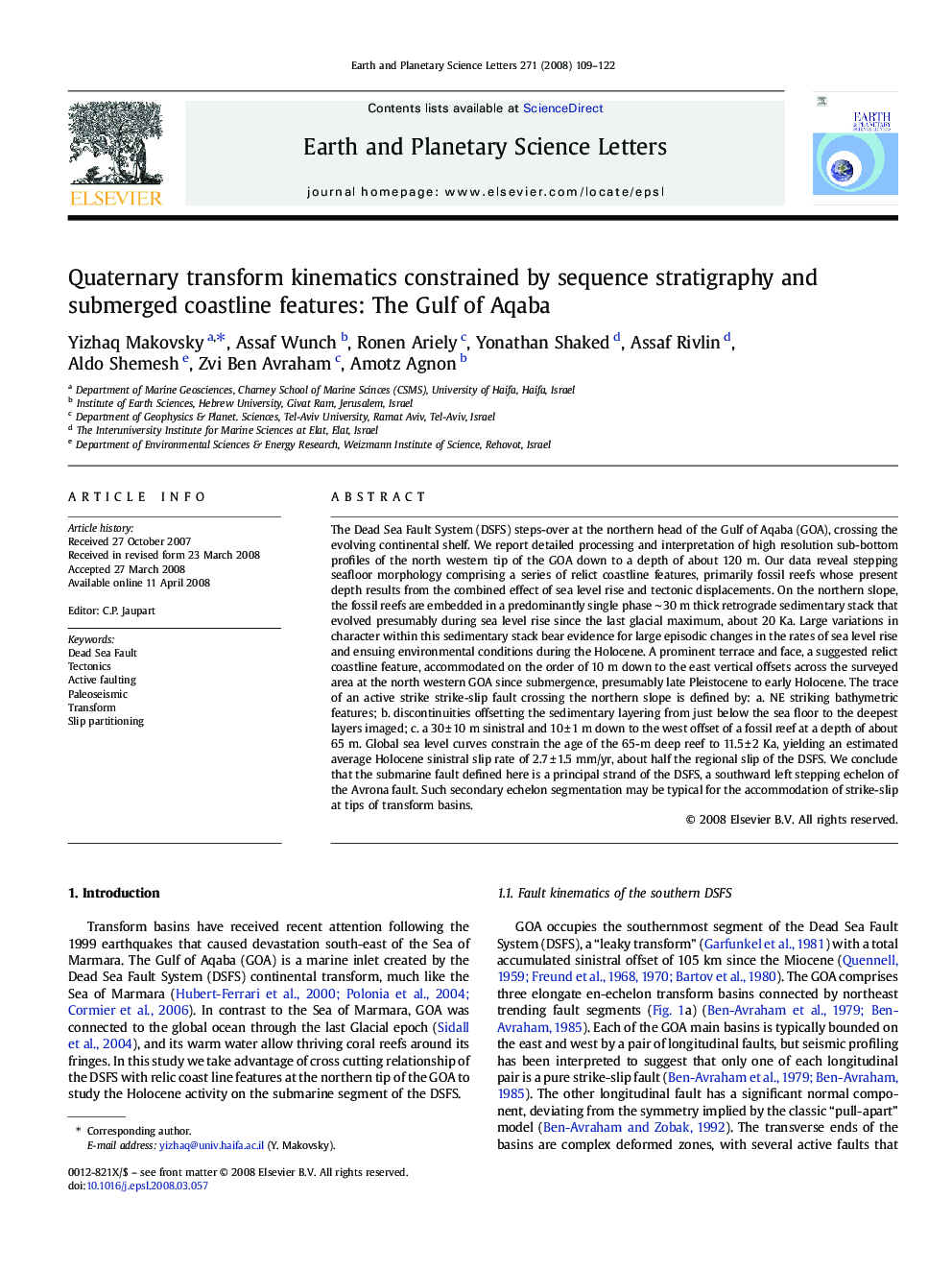| Article ID | Journal | Published Year | Pages | File Type |
|---|---|---|---|---|
| 4679596 | Earth and Planetary Science Letters | 2008 | 14 Pages |
The Dead Sea Fault System (DSFS) steps-over at the northern head of the Gulf of Aqaba (GOA), crossing the evolving continental shelf. We report detailed processing and interpretation of high resolution sub-bottom profiles of the north western tip of the GOA down to a depth of about 120 m. Our data reveal stepping seafloor morphology comprising a series of relict coastline features, primarily fossil reefs whose present depth results from the combined effect of sea level rise and tectonic displacements. On the northern slope, the fossil reefs are embedded in a predominantly single phase ∼ 30 m thick retrograde sedimentary stack that evolved presumably during sea level rise since the last glacial maximum, about 20 Ka. Large variations in character within this sedimentary stack bear evidence for large episodic changes in the rates of sea level rise and ensuing environmental conditions during the Holocene. A prominent terrace and face, a suggested relict coastline feature, accommodated on the order of 10 m down to the east vertical offsets across the surveyed area at the north western GOA since submergence, presumably late Pleistocene to early Holocene. The trace of an active strike strike-slip fault crossing the northern slope is defined by: a. NE striking bathymetric features; b. discontinuities offsetting the sedimentary layering from just below the sea floor to the deepest layers imaged; c. a 30 ± 10 m sinistral and 10 ± 1 m down to the west offset of a fossil reef at a depth of about 65 m. Global sea level curves constrain the age of the 65-m deep reef to 11.5 ± 2 Ka, yielding an estimated average Holocene sinistral slip rate of 2.7 ± 1.5 mm/yr, about half the regional slip of the DSFS. We conclude that the submarine fault defined here is a principal strand of the DSFS, a southward left stepping echelon of the Avrona fault. Such secondary echelon segmentation may be typical for the accommodation of strike-slip at tips of transform basins.
